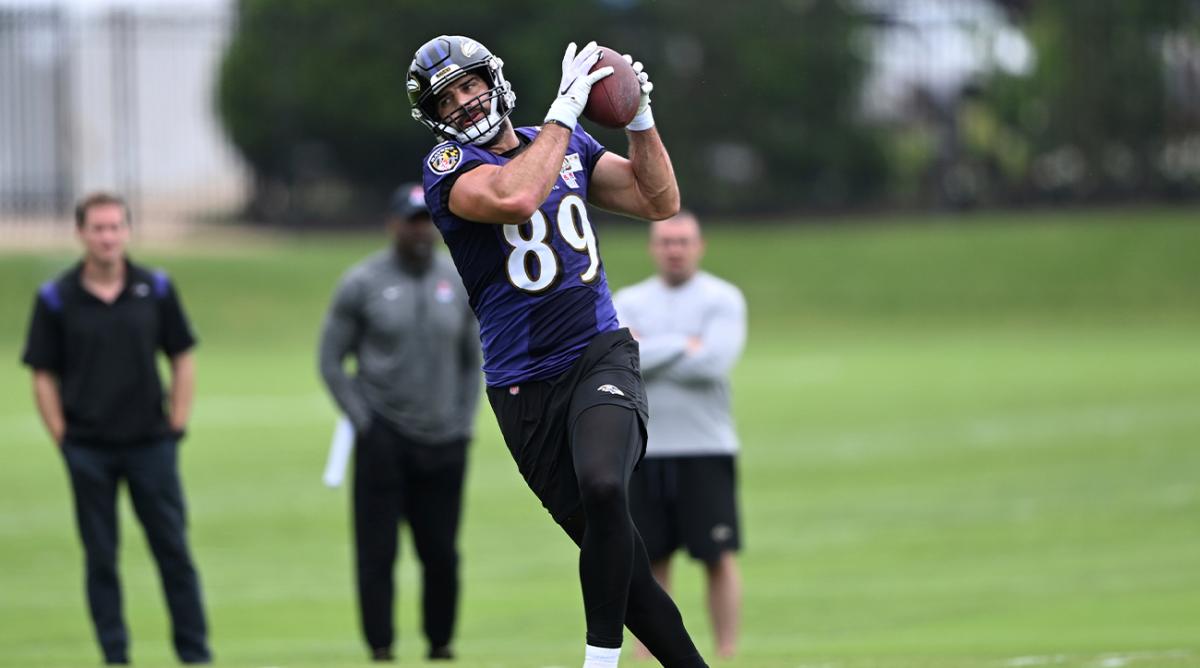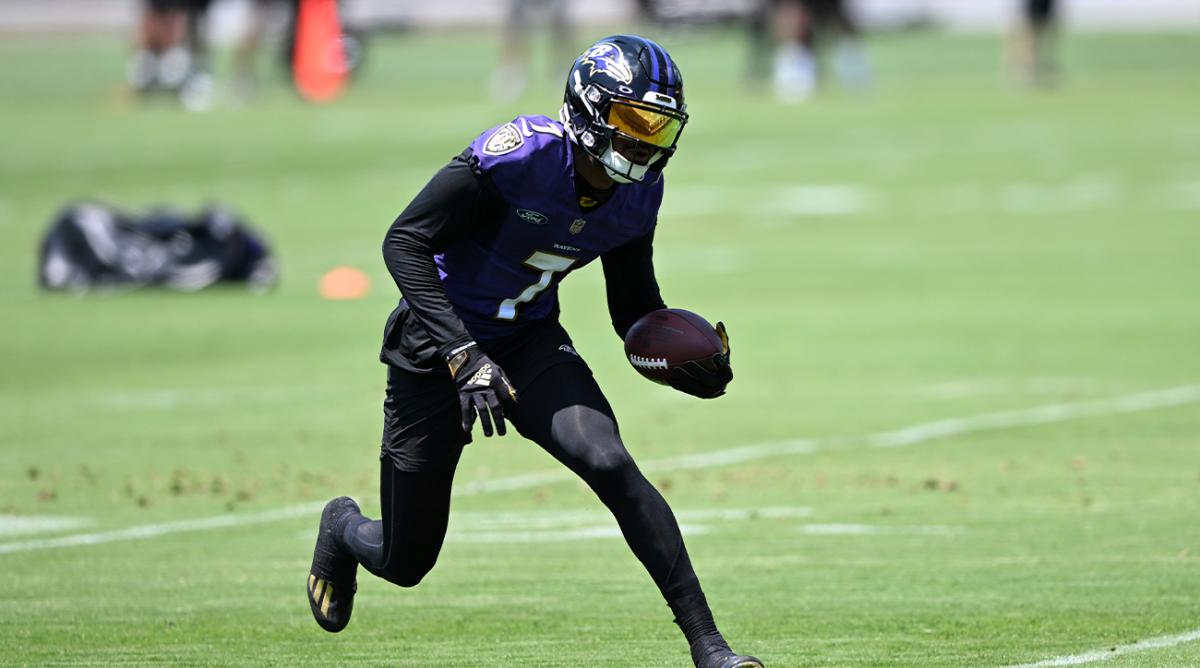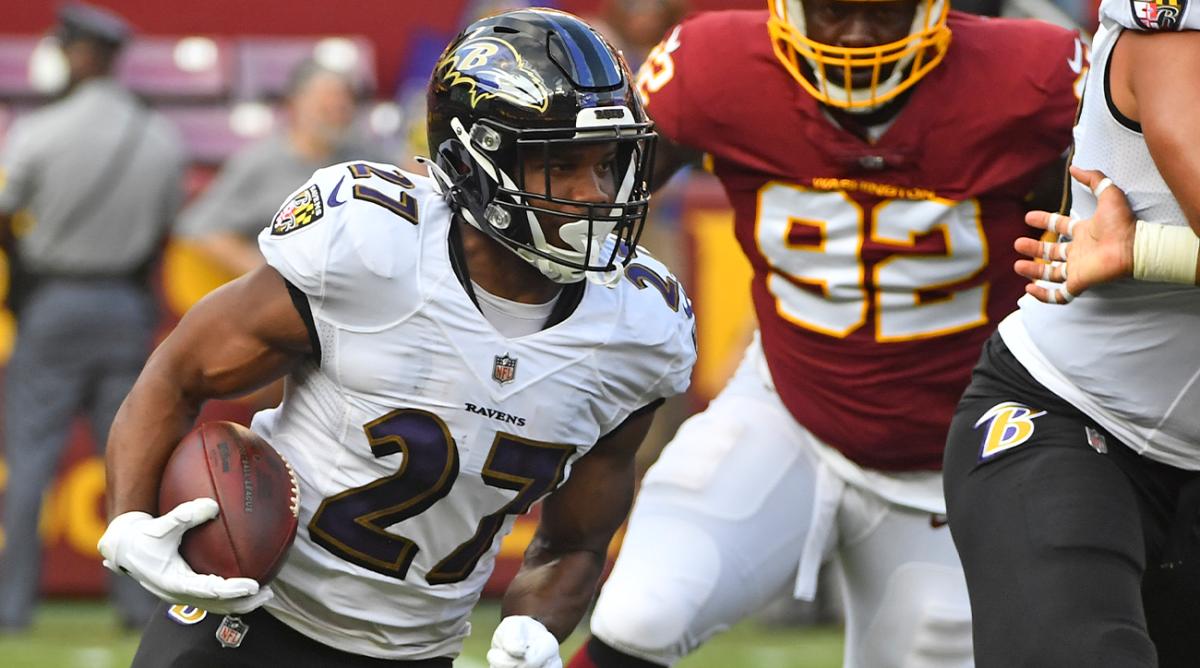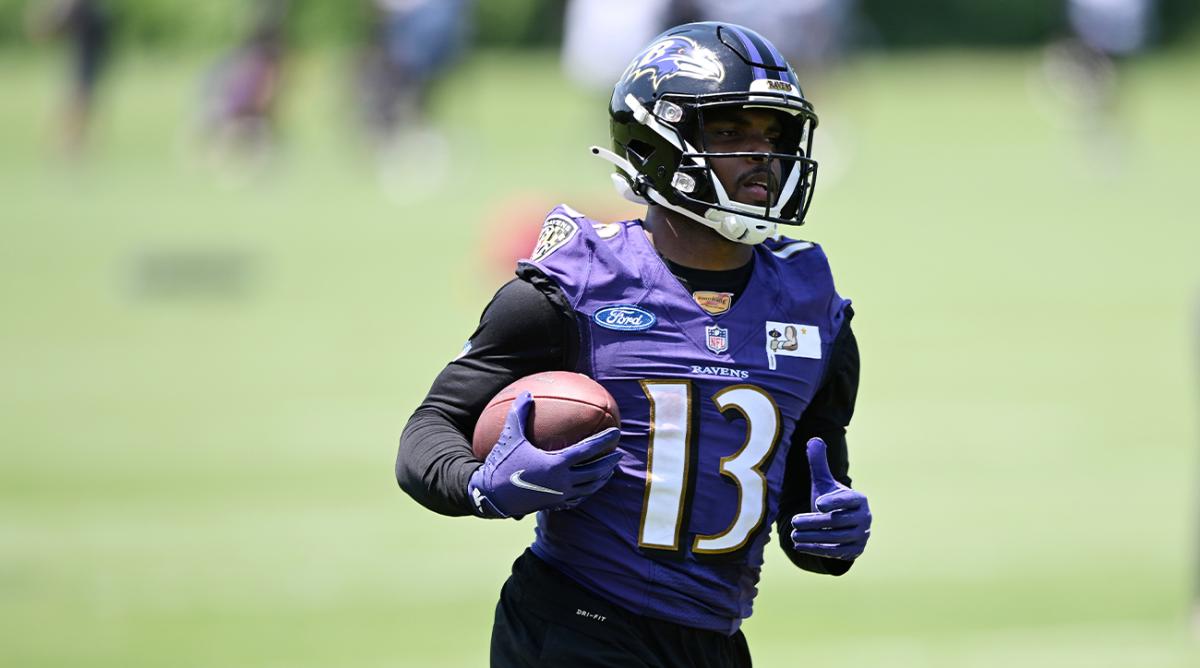The Replacements: Ravens Relying on In-House Talent After Trading Top Receiver
Note: While a big part of fantasy football research is trying to assess how players will do when they go to a new team, it’s also critical to get a handle on what the old team is doing to replace those players. It’s an opportunity for players to step up and fill the void. In this series, we’ll examine six teams that had key departures this offseason and must find new ways to replace key fantasy production.
The Replacements: Titans | Chiefs | Falcons | Packers | Browns
The Ravens were saved for the final installment of The Replacements series because they are a curious case.
Just like the Titans, Chiefs, Packers, Falcons and Browns before them, they lost plenty of receiving production. The difference is that Baltimore did not make any marquee or even really any marginal moves in the offseason to replace what was lost.
Rather, the plan seems to run it back with the belief that a healthy Lamar Jackson will elevate the offense. That’s not an entirely foolhardy approach.
Jackson, a former MVP, had the worst season of his career in 2021, fighting through injury and COVID-19 as the Ravens missed the playoffs. Him being back under center—presumably for 17 games—is alone already an upgrade. And despite what Baltimore lost, it retained its top receiving option: tight end Mark Andrews.
Still, 45.1% of the Ravens’ targets from a season ago are available, the fifth-highest mark in the league, according to 4for4.com. That figure is unsurprising after Baltimore dealt 2019 first-round pick Marquise Brown on draft night to the Cardinals.
Brown set career highs in targets, catches and receiving yards a season ago. The front office also let veteran receiver Sammy Watkins walk in the offseason, and the hodgepodge running back room the team assembled for 2021 after being decimated by injury is gone. The Ravens’ 70 vacated running back targets are the most in the NFL.
Jackson, Andrews and the realization of the draft capital Baltimore has invested at the receiver position in recent years (though notably not in 2022) will dictate whether this passing offense can return to its 2019-2020 levels.

Bet on the NFL at SI Sportsbook

Mark Andrews
Andrews led all tight ends in targets (153), receptions (107), receiving yards (1,361) and tied for first in touchdowns (nine) on the way to his first All-Pro nod. He was the best player in the Ravens’ offense last season and he could be in line for even more work.
Andrews was also one of nine players in the NFL to be targeted at least 150 times in 2021 and he was the only tight end to break that threshold, beating Travis Kelce by a considerable margin. He played 75% of Baltimore’s offensive snaps and has zero competition in the tight end room—the other three tight ends on the roster combined for 18 targets, though Charlie Kolar was drafted in the fourth round this spring.
Mark Andrews Wins Octopus of the Year Award
Heading into his fifth season, Andrews has emerged as an elite receiving option at the tight end position and a deadly red zone target at 6’5”. He scored all nine of his touchdowns a season ago in the red zone and scored nine of his career-high 10 touchdowns inside the 20-yard line in 2019, the year Jackson won MVP.
Andrews has led the team in receiving in two of the past three years and he now has even less competition to be Jackson’s top target.
My colleague Shawn Childs wrote of Andrews: “His catch rate (69.9) commands more chances. The trick is Baltimore throwing the ball enough to support follow-through in 2022.” The Ravens’ 56.4% pass rate ranked 22nd in the league in 2021.

Rashod Bateman
Baltimore spent the 27th pick of the 2021 draft on Bateman and he didn’t make his debut until Week 6 due to a groin injury. It was an inauspicious start for the second first-round receiver the team selected in a three-year span: four catches for 29 yards.
Bateman flashed at different points during the season—six catches for 80 yards against the Dolphins, seven for 103 against the Browns—but he found the end zone just once across 12 games and finished as a very distant third behind Andrews and Brown in the receiving pecking order. Now, Bateman is set to be Baltimore’s WR1.
That role was fruitful in spurts for Brown, even given Baltimore’s propensity to run the ball and the top receiver job not necessarily translating to leading the team in targets. Bateman showed big-play ability in his best season at Minnesota, averaging better than 20 yards per catch despite high usage. That figure was down to 11.1 YPC as a rookie with an ADOT of just 8.8 that figures to rise this season.

The Running Back Room
It’s not uncommon for vacated volume to be redistributed to running backs. But that might not be the case for this Ravens roster, at least when it’s at its healthiest.
J.K. Dobbins and Gus Edwards both tore their ACLs ahead of Week 1 in 2021, a huge blow that forced the team to cycle through the likes of Devonta Freeman, Latavius Murray and Le’Veon Bell, none of whom are back this season.
Edwards and Dobbins are both still rehabbing their season-ending injuries and neither were particularly prolific pass-catchers before their injuries. Dobbins caught 15 passes in 15 games as a rookie in 2020 and topped out at 26 receptions in three years at Ohio State. Edwards, meanwhile, has just 22 career targets in 43 games.
The 12 Teams That Can Win the Super Bowl
That brings us to the depth addition the front office made in the offseason: Mike Davis. The journeyman running back largely disappointed a season ago in Atlanta, but he logged back-to-back seasons with at least 44 catches and missed just one game.
Going even further down the depth chart, there’s Justice Hill, who tore his Achilles ahead of the start of last season. But Hill, a 2019 selection out of Oklahoma State, is not much of a threat as a receiver, either. And to add to this running back room, the Ravens drafted Tyler Badie from Missouri in the sixth round. He caught 126 passes across four seasons in college and hauled in 54 catches his senior year.
That’s five players, three of whom are coming off season-ending injuries, one who is on a $1 million, one-year deal and the last was selected near the bottom of this year’s draft. Receiving work may go to the running backs as a whole, but it’s difficult to predict whom with much confidence, especially given the injury aspect.

The Other Receivers
Baltimore's receiving room is incredibly young, especially given that Devin Duvernay is the most experienced of the group.
The third-round pick from Texas has played 32 games in two seasons and has just 473 yards and two touchdowns to show for it on offense. He earned All-Pro honors as a kick returner last season and led the NFL in yards per punt return.
Duvernay will assume the WR2 spot and figures to see more work than the 47 targets he fielded a season ago. His ADOT was just 6.0 in 2021, a number that has to improve.
Rounding out the starting receiving group is James Proche, a third-year burner out of SMU. Proche fielded punt returns as a rookie and moved over to receiver in 2021 but only saw 20 targets across 14 games. He was a big-play threat in college and made frequent trips to the end zone, though he’s yet to score in the NFL.
Further down the depth chart lies Tylan Wallace, who was drafted in the third round from Oklahoma State the same year as Bateman but caught just two passes last year. After him, there’s a few undrafted rookies out of big-time programs—Alabama’s Slade Bolden and Ohio State’s Binjimen Victor and then there’s Jaylon Moore of UT Martin.
Get fantasy and betting analysis in your inbox by signing up for the Winners Club newsletter
Check the Latest Odds from SI Sportsbook
More Betting, Fantasy and NFL:
• SI Fantasy Draft Kit
• Betting/Fantasy Impact: Blue Jays Fire Manager
• NFL Draft No. 1 Pick Odds
• Heisman Odds
• Big 12 Betting Preview
• Fabiano’s Fantasy Forecast
• NFL Week 1 Line Movement
• Bold NFL Betting Predictions
• Fantasy Late-Round Fliers
• Reasonable Expectations for Second-Year QBs
